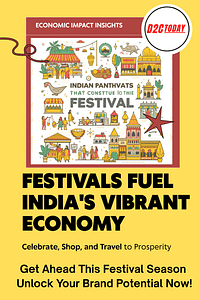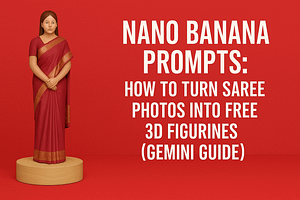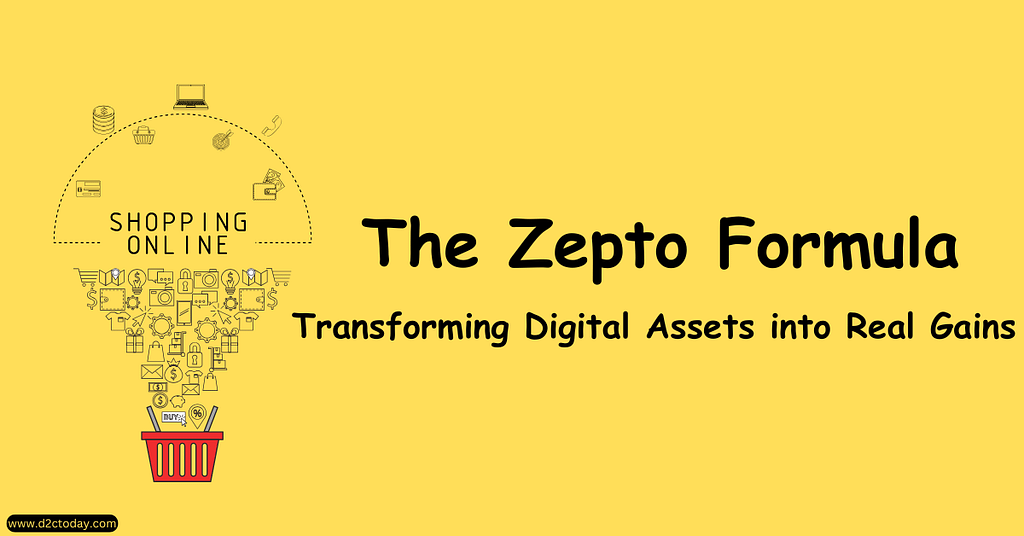Quick commerce is transforming the retail industry, with Zepto, Blinkit, and Instamart emerging as key players. These platforms have redefined consumer expectations by offering ultra-fast delivery services, leveraging advanced logistics, and innovative business strategies. Their ability to adapt to changing demands and maintain efficiency in a highly competitive market highlights the dynamic evolution of the sector.In this Newsletter we will try to dive deep in zepto revolutionary business model & how they are in quest to achieving profitability.
India’s quick commerce sector has experienced significant growth, with key players like Zepto, Blinkit, and Swiggy’s Instamart competing for market share. As of January 2024, Blinkit led the market with a 40% share, followed by Instamart at 32%, and Zepto at 28%.
This represents a notable shift from March 2022, when Instamart dominated with 52%, Blinkit held 32%, and Zepto had 15%.
The rapid expansion of these platforms has been fueled by substantial investments; for instance, Zepto raised $665 million in June 2024, increasing its valuation to $3.6 billion.
The quick commerce market in India is projected to reach $6 billion in sales by 2025, up from $100 million in 2020, indicating a significant shift in consumer shopping habits towards rapid delivery services.
Zepto’s Journey to Operational Break-Even in Mumbai
Zepto, a trailblazer in India’s quick commerce revolution, achieved a pivotal milestone in late 2024 by reaching operational break-even in Mumbai. This milestone was not merely the result of a single initiative but a culmination of targeted strategies addressing logistical inefficiencies, leveraging advanced technologies, and tapping into the psyche of the urban consumer. Mumbai, with its high population density and diverse consumer base, presented both opportunities and challenges that demanded precise execution.
Key Challenges on the Path to Break-Even
One of the most significant hurdles Zepto faced in Mumbai was the high cost associated with last-mile deliveries. In a model built on the promise of 10-minute deliveries, the logistics backbone required to fulfill this commitment was inherently expensive. The need for a dense network of riders capable of delivering orders within tight time frames necessitated an investment in recruitment, training, and technological infrastructure. Real-time logistics optimization became essential, as factors like traffic congestion and unpredictable weather patterns in Mumbai often disrupted operations.
Compounding this challenge was the low average order value (AOV). With an initial basket size averaging ₹350 ($4.25), the profit margins per order were slim. This was further complicated by consumer purchasing behavior, which often favored frequent, small orders rather than bulk purchases. Seasonal variations and fluctuating demand also made it difficult to maintain a steady revenue stream. Addressing these challenges required a deep understanding of urban logistics and consumer habits, coupled with the strategic deployment of resources.
Zepto Revolutionary Business Model Sustainable Operations
To address these challenges, Zepto implemented a series of interwoven strategies designed to optimize efficiency and drive profitability.
Cluster-Based Operations
Zepto’s first breakthrough came with its decision to restructure Mumbai into high-density micro-clusters. Each of these clusters was carefully mapped to ensure that they could be efficiently serviced by a dedicated dark store. By reducing the delivery radius within each cluster, Zepto was able to minimize travel times and ensure that riders could complete multiple deliveries within a short window. Riders were assigned to specific zones, allowing them to build familiarity with their routes, further reducing delays caused by navigation errors.
This operational model also introduced a new level of localization to Zepto’s services. By studying the preferences of consumers within each cluster, Zepto could tailor inventory at the local level, ensuring that products in high demand were always readily available. The use of a real-time operations dashboard helped monitor and refine these processes continuously, ensuring that delivery efficiency remained consistent across the city.
AI-Driven Inventory Optimization
The second critical intervention involved leveraging artificial intelligence to optimize inventory management. Zepto integrated predictive analytics into its operations, enabling it to anticipate demand fluctuations with remarkable accuracy. For instance, during Mumbai’s monsoon season, data revealed a 35% increase in demand for comfort foods like tea and snacks. By adjusting inventory proactively, Zepto ensured that these high-demand items were always in stock, eliminating the risk of stockouts.
Beyond demand forecasting, the AI system also helped streamline reordering processes. Automated inventory replenishment reduced lead times and ensured that dark stores were well-stocked without overstocking, which could lead to wastage. Products nearing expiration were flagged for dynamic discounting, encouraging quick sales and reducing wastage by 22%.
This integration of AI extended beyond supply chain management. Customer feedback loops were incorporated to refine the selection of products available, enabling Zepto to introduce niche items, such as plant-based snacks and organic produce, in affluent neighborhoods. This approach not only improved customer satisfaction but also deepened brand loyalty by catering to specific consumer needs.
Driving Higher Basket Sizes Through Incentives
Increasing the AOV was another critical focus area for Zepto. The company introduced a series of targeted initiatives to encourage customers to place larger orders. One such approach was the introduction of promotional bundles that paired complementary products at discounted rates. For instance, customers ordering snacks were prompted to add beverages, with discounts offered on the combination.
Upselling and cross-selling were also powered by AI algorithms that suggested relevant add-ons based on a customer’s cart. For example, a customer buying bread might be prompted to add spreads or dairy products. Additionally, subscription models for daily essentials were rolled out, offering convenience and discounts to regular customers.
These initiatives were further amplified during seasonal and cultural events. Campaigns such as “Monsoon Comfort Packs” bundled popular products like tea, biscuits, and rain essentials, catering to the heightened demand during the rainy season. Partnerships with premium brands also allowed Zepto to offer exclusive deals, attracting higher-income segments and boosting overall order values.
Over six months, these strategies proved highly effective, with the AOV increasing from ₹350 to ₹410 ($5). The higher revenue per order played a crucial role in offsetting the fixed costs of operations, pushing Zepto closer to profitability.
The Road to Results for Star Kid of Quick Commerce
Zepto’s targeted interventions yielded significant results, allowing it to achieve operational break-even in Mumbai. The company reported a 10% reduction in operational costs, driven by the efficiency gains from cluster-based operations and AI-powered inventory management. Simultaneously, order volumes increased by 30%, a testament to the growing trust and loyalty among Mumbai’s consumers.
Moreover, Zepto’s success in Mumbai became a blueprint for its expansion into other metropolitan areas. By demonstrating that quick commerce could be both efficient and profitable, the company set a new benchmark for the industry. Zepto’s ability to integrate technology with local insights and its relentless focus on customer experience underscore its position as a leader in India’s quick commerce sector.
This case study illustrates that operational excellence in quick commerce is achievable through a combination of strategic foresight, technological innovation, and a nuanced understanding of consumer behavior. As Zepto continues to scale, its journey in Mumbai serves as a model for the future of urban logistics in India and beyond.
How Zepto Leveraged Digital Assets as a Tool for Revenue
In the highly competitive landscape of quick commerce, Zepto established itself as not just a delivery platform but a strategic ally for brands looking to amplify their presence and connect with urban consumers. By effectively utilizing its digital assets, including its mobile application, push notifications, and social media channels, Zepto turned its consumer engagement touchpoints into a robust marketing and branding engine. This mutually beneficial strategy allowed brands to achieve greater visibility and sales while enabling Zepto to strengthen its customer experience and generate additional revenue streams.
Digital Assets as a Marketing Powerhouse
Zepto’s journey into utilizing its digital ecosystem as a marketing tool began with a clear understanding of the dynamics of its consumer base. By 2024, Zepto had amassed over 15 million app downloads and recorded approximately 8 million active monthly users. These numbers reflected a consumer group that was not only substantial in size but also actively engaged with the platform.
This engagement created a valuable asset for brands, offering a direct channel to consumers who were already in a shopping mindset. Unlike traditional advertising mediums, Zepto’s app allowed brands to reach their audience at the critical moment of purchase decision-making, enhancing the effectiveness of their marketing efforts.
Personalization Through Data-Driven Insights
One of the cornerstones of Zepto’s strategy was its ability to harness the power of data analytics to deliver highly personalized marketing campaigns. The platform gathered extensive data on consumer purchasing behavior, preferences, and patterns. This information was used to create detailed customer personas and predict future behaviors.
For instance, during the festive season, Zepto identified that certain segments of its user base showed a preference for giftable items such as chocolates, snacks, and beverages. Leveraging this insight, the platform partnered with leading brands to promote festive gift packs tailored to these preferences. These campaigns were integrated seamlessly into the app, where users would encounter targeted product suggestions, often paired with time-sensitive discounts to encourage immediate purchases.
This level of personalization was further amplified by advanced recommendation algorithms that suggested complementary products based on items already in the user’s cart. For example, a user purchasing bread might be prompted to add butter or spreads, with tailored discounts acting as an additional incentive. Such initiatives not only drove higher sales for partner brands but also increased the average order value (AOV) for Zepto.
Transforming the App into a Marketing Platform
Zepto’s mobile app became a key medium for brand visibility. The platform was designed with strategic spaces for advertisements, allowing partner brands to promote their products prominently. This included prime positions on the app’s homepage, category headers, and dedicated sections for sponsored products.
For example, when a major FMCG brand launched a new line of instant beverages, Zepto provided premium placement for these products across its app. This ensured maximum visibility during the critical launch period, driving consumer curiosity and trial. The campaign was further enhanced through push notifications and in-app banners, reinforcing the promotional message and encouraging conversions.
The app also facilitated interactive marketing campaigns. Limited-time offers, gamified discounts, and flash sales became recurring features, allowing brands to build excitement around their products. These tactics proved especially effective during high-demand periods like festivals and major events.
Collaborative Campaigns: Strengthening the Brand Ecosystem
Zepto’s collaborative approach with brands went beyond traditional advertising. The company partnered with brands to create co-branded campaigns that aligned with consumer interests and cultural moments. During the Indian Premier League (IPL) season, for example, Zepto worked with snack and beverage brands to curate exclusive “Game Night Packs.” These packs were marketed as an ideal accompaniment to match-viewing experiences, combining the brand’s offerings with Zepto’s promise of rapid delivery.
These campaigns were not limited to the app. Zepto extended its promotional activities to its social media channels, creating visually appealing posts, engaging stories, and influencer collaborations. Influencers, often aligned with the theme of the campaign, demonstrated the convenience of using Zepto for quick deliveries. This multi-channel approach significantly amplified the reach of these campaigns, driving both app engagement and brand visibility.
I will Play my Game in Your Game
The partnership between Zepto and its brands created tangible benefits for both parties. For brands, Zepto provided a platform to directly engage a tech-savvy, urban consumer base. The high levels of personalization ensured that promotional messages resonated with the target audience, leading to higher conversion rates. Additionally, Zepto shared anonymized consumer insights with its partners, enabling them to refine their strategies and product offerings based on real-time data.
For Zepto, these collaborations opened up new revenue streams. Sponsored placements, co-branded campaigns, and premium app real estate became significant sources of income. At the same time, the diverse and dynamic range of products offered through these partnerships enhanced the overall customer experience, reinforcing Zepto’s reputation as a go-to platform for quick and convenient shopping.
Cadbury-Elevating a Premium Chocolate Brand
An illustrative example of Zepto’s marketing prowess is its partnership with a leading premium chocolate brand during Valentine’s Day 2024. The campaign centered around promoting exclusive gift packs, with Zepto dedicating a prominent section of its app to these products.
Push notifications targeting specific user segments highlighted the availability of these packs, while social media ads and influencer partnerships created buzz around the campaign. The results were remarkable, sales of the chocolate brand surged by 60%, and Zepto recorded a 15% increase in app engagement during the promotional period.
In Summary
Zepto’s innovative use of its digital assets showcases how quick commerce platforms can transcend their traditional roles to become key marketing and branding partners for consumer brands. By combining data-driven personalization, high-impact app placements, and collaborative campaigns, Zepto created a win-win model that benefits both its partners and its customers. This approach not only drives short-term sales but also fosters long-term brand loyalty and consumer engagement, making it a benchmark for the industry.
Additional Resources Used in Research & Writing This Newsletter







